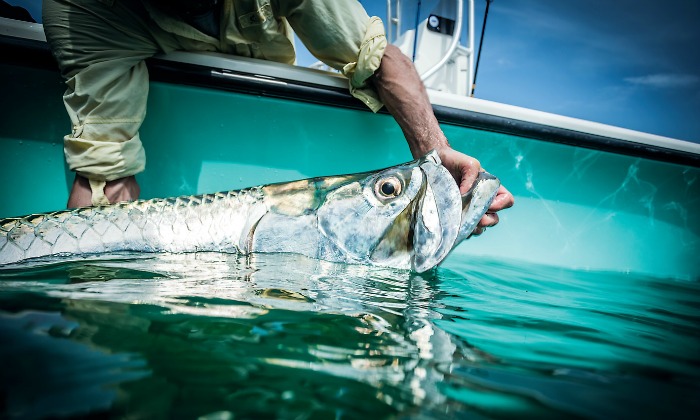
No doubt you’ve seen tarpon paired with fly fishing or bottom jigging efforts. There will certainly be times, however, based on the mood of the fish, the weather conditions, and the angler’s preferences that other methods are necessary. Believe it or not, cut bait is often the go-to choice.
|
|
| During challenging conditions, cut bait can often be the key that brings trophy tarpon to hand. |
Although this may burst the bubble of many a purist, tarpon are well known to feed on sinking or sunken fish scraps. At certain South Florida charter boat docks, where game fish carcasses are routinely tossed over, tarpon often take up residence for the daily free meal. This illustrates that when the opportunity arises, tarpon will readily feed on cut bait and dead baitfish.
There are three main factors to consider when employing cut bait for tarpon:
Type: Match the Hatch
If you are at a charter boat dock and the tarpon are feeding on snapper or mahi pieces, your choice is a simple one. When you spot rolling tarpon in the open water, use a cut bait and “match the hatch” with fresh bait that you observe or common sense tells you lives there such as mullet or pinfish. But bear in mind that other cut bait that is not endemic to the area may work as well. For instance, in my home waters of Biscayne Bay in Miami, I’ve had success using cut bunker on tarpon throughout the years. I’ve even watched the “Silver King” gobble up decayed bait in a far from royal fashion. However, such a presentation neither could stay on your fishing hook nor would you want to handle it.
Shape: Chunks, Strips, or Squares
For reasons unknown to even experts, tarpon will prefer and strike different shapes of cut bait, be they chunks, strips, or squares. The only way is to experiment with different shapes. Interestingly, I’ve dropped herring strips through a school of tarpon feeding on threadfins only to find that a mullet square would get the only strikes.
Also remember that shape affects the sink rate as well as its action on the way to the bottom. For instance, mullet chunks plummet quickly to the bay or sea floor — and stay there. Strips, however, will glide down the water column enticingly like wounded or dying live bait. The slowest drop will occur with a square shape.
Smell: Make Scents
Tarpon are highly responsive to scent, so remember that more exposed surface means more aroma. That means scaling the skin before cutting the bait shape. The strongest bait features exposed meat and scaled skin concurrently.
Put these principles into place on your next tarpon outing, and you can quickly turn a difficult day into a successful one. The frowns from any passing purists will be quickly forgotten when your drag starts screaming.
- 8726 views


